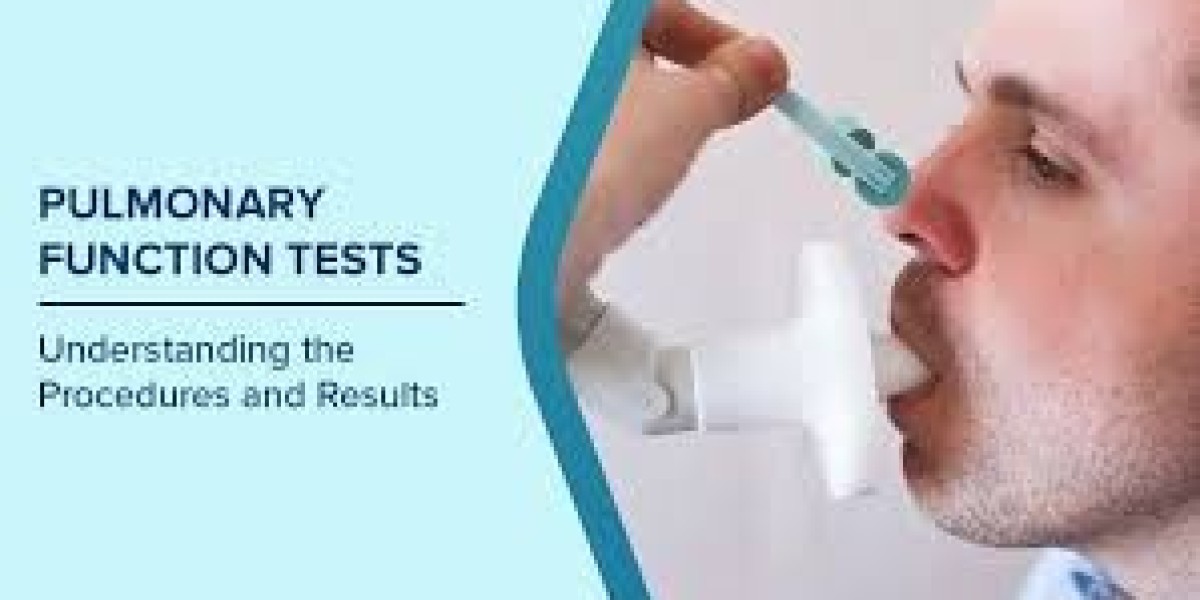Pulmonary Function Tests (PFTs) are non-invasive diagnostic tests that evaluate how well your lungs are working. These tests play a vital role in diagnosing, managing, and monitoring respiratory diseases such as asthma, chronic obstructive pulmonary disease (COPD), and interstitial lung disease (ILD).
In an era where respiratory health is increasingly scrutinized due to pollution and post-COVID complications, PFTs have become essential tools in modern medicine. This comprehensive guide will walk you through the types of tests, how they are performed, what results mean, and why they’re crucial for both diagnosis and treatment planning.
What Are Pulmonary Function Tests?
These Function Tests are a series of breathing tests that measure:
Lung volume (how much air your lungs can hold)
Airflow rates (how quickly you can exhale)
Gas exchange (how efficiently oxygen and carbon dioxide are transferred in the lungs)
PFTs are typically performed using specialized equipment such as spirometers, body plethysmographs, and gas diffusion systems in hospitals, clinics, or diagnostic centers.
Why Are Pulmonary Function Tests Important?
PFTs are instrumental in:
Diagnosing lung conditions like asthma, COPD, pulmonary fibrosis, and bronchiectasis
Monitoring the progression of chronic lung diseases
Evaluating the effectiveness of treatment
Pre-operative assessments for patients undergoing major surgeries
Occupational health screening for exposure to toxic substances
According to the American Thoracic Society, lung function decline is often a silent process. PFTs offer a quantifiable method to catch issues before they worsen.
Types
1. Spirometry
This is the most common PFT and measures:
Forced Vital Capacity (FVC) – the total amount of air exhaled
Forced Expiratory Volume in 1 second (FEV1) – how much air you exhale in the first second
FEV1/FVC ratio helps diagnose obstructive vs. restrictive lung diseases.
2. Plethysmography
Also known as body box testing, this measures total lung capacity (TLC) and residual volume (RV). It gives a detailed look at how much air remains in the lungs after exhalation.
3. Diffusion Capacity (DLCO)
This test checks how well gases like oxygen move from your lungs into your blood, useful for diagnosing diseases that damage the lung’s air sacs (alveoli).
4. Bronchoprovocation Tests
This involves inhaling substances like methacholine to provoke bronchospasm in people suspected to have asthma.
How Are Pulmonary Function Tests Performed?
The procedure is safe, typically painless, and takes about 30–60 minutes. Here’s what to expect:
Before the Test
Avoid bronchodilators (if advised)
Don’t smoke for at least 24 hours before testing
Avoid heavy meals before the test
Wear comfortable clothing
During the Test
You’ll sit upright or stand
A technician will guide you through various breathing maneuvers
A clip may be placed on your nose to ensure accurate airflow measurement
After the Test
You can return to normal activities unless advised otherwise. Your results will be interpreted by a pulmonologist or your primary care provider.
Interpreting the Results
| Measurement | Normal Range | Indicates If... |
|---|---|---|
| FEV1 | ≥80% predicted | Below 80% may suggest obstruction |
| FVC | ≥80% predicted | Low values can indicate restriction |
| FEV1/FVC | ≥0.70 | Lower ratio may mean COPD or asthma |
| DLCO | 75–140% | Low DLCO may mean pulmonary fibrosis |
Results are typically compared to predicted values based on age, sex, height, and ethnicity.
Who Should Get a Pulmonary Function Test?
PFTs are recommended for individuals who:
Experience shortness of breath, chronic cough, or wheezing
Have a history of smoking
Are exposed to occupational hazards (like asbestos or coal dust)
Are being monitored for chronic lung conditions
Need clearance before undergoing surgery
Had COVID-19 and are experiencing long-term respiratory symptoms
According to a 2023 report by the Global Initiative for Chronic Obstructive Lung Disease (GOLD), over 392 million people worldwide suffer from COPD. Early detection through PFTs can significantly improve outcomes.
Advantages of Pulmonary Function Testing
Early diagnosis: Detect issues before symptoms worsen
Customized treatment: Helps tailor medication, lifestyle, and rehabilitation plans
Objective measurement: Offers numerical insight into lung function
Safe and reliable: Minimal risks with high accuracy
Commercial Value:
Many diagnostic centers and hospitals offer these Function Tests. When choosing a facility, consider:
Availability of certified technicians
Accreditation from health authorities
Updated and calibrated equipment
Transparent pricing with or without insurance
If you are near Bangalore, Ecotown Diagnostics provides comprehensive Pulmonary Function using the latest technology, tailored for patients with chronic respiratory symptoms or undergoing pre-surgical evaluations.
Real-World Case Study: PFTs After COVID-19
A 2022 study published in The Lancet Respiratory Medicine showed that 35% of post-COVID-19 patients continued to show reduced DLCO values 3 months after infection. Pulmonary Function helped clinicians develop long-term treatment and rehabilitation strategies for these patients.
Risks and Limitations
While PFTs are generally safe, mild side effects may include:
Lightheadedness from forced breathing
Coughing during the test
Rarely, chest discomfort in patients with heart disease
PFTs are not recommended during acute respiratory illness or in patients with recent heart attacks.
Cost and Insurance
Costs vary based on region and facility. On average:
Spirometry: ₹800–₹2,500 in India
Full PFT panel: ₹2,000–₹5,000
Insurance may cover PFTs when prescribed by a doctor for diagnostic or monitoring purposes. Always check with your provider for eligibility.
FAQs
1. Are these Function Tests painful?
No, they are non-invasive and usually painless. Some patients may experience slight discomfort due to deep breathing.
2. How often should I take a PFT?
It depends on your condition. Chronic patients may need it annually or semi-annually. For diagnosis, a one-time test may suffice.
3. Can children take Pulmonary Function Tests?
Yes, children over 5–6 years can typically perform spirometry, especially if trained to follow instructions.
4. Will I get immediate results?
Preliminary results may be available immediately, but a pulmonologist usually provides detailed interpretation within 24–48 hours.
5. Is it safe for pregnant women?
Generally yes, especially spirometry. However, always consult your physician beforehand.
Conclusion
These Function Tests are powerful, non-invasive tools for diagnosing and managing a wide range of lung conditions. As respiratory health gains importance in today’s world, especially post-pandemic, timely PFTs can prevent complications, personalize treatments, and improve quality of life. Whether you're a smoker, dealing with chronic cough, or recovering from COVID-19, don't ignore the signs your lungs might be sending.
Are you ready to take the next step toward better breathing and optimal lung health?









